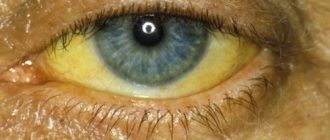From a young age we are familiar with the concept of temperament. More precisely, not even its definition, but the division of people into sanguine, melancholic, choleric, and phlegmatic. But is this approach relevant in the 21st century? What is temperament? Have more modern classifications emerged? How fair is it to say that temperament is the basis of our behavior? What does knowing your temperament or understanding what kind of temperament your interlocutor has give you? Is it possible to change your life if you understand this issue?
Temperament type: MELANCHOLIC
The type of nervous system is weak, unbalanced, inactive.
- The melancholic type of temperament is characterized by increased sensitivity.
- Melancholic people are able to perceive approval and censure.
- Makes high demands both on himself and on the people around him.
- They feel good about other people.
- Under favorable conditions, they are restrained and tactful.
- The emotional states and feelings of people with a melancholic type of temperament are distinguished by their depth, duration and great strength.
- Melancholic people are characterized by constancy and depth, acute susceptibility to external influences.
- In a familiar and calm environment, people with a melancholic type of temperament feel calm and work very productively.
- Melancholic people are distinguished from other types by their high emotional sensitivity.
- They have a hard time withstanding grief and resentment, although this may not appear outwardly.
- They keep their thoughts and experiences to themselves.
- Melancholic people experience even minor failures greatly.
- A melancholic person is very shy, shy, vulnerable, secretive, indecisive, unsure of himself and his abilities.
- Always pessimistic, rarely laughs.
- At the slightest failure he feels depressed and confused.
- In an unfamiliar environment, he gets lost.
- A melancholic person is embarrassed when contacting new people.
- It takes a long time to adapt to a new team.
- Has a small circle of close people.
- Melancholic people have a tendency to loneliness, depression, suspicion, they become isolated and withdraw into themselves.
- They get tired quickly and need to take breaks while working.
- The melancholic type of temperament is characterized by weak, quiet speech up to a whisper, impressionability to the point of tearfulness, excessive touchiness and tearfulness.
- The slightest trouble or nervous environment at work can throw a melancholic person out of balance.
- Under unfavorable conditions, melancholic people are withdrawn, fearful, and anxious.
- Melancholic is the only type of temperament characterized by slight vulnerability and touchiness.
- A melancholic person prefers to obey rules and authorities.
- On the eve of important events, he is always overly worried and worried.
- What a choleric person sweeps away on his way, a phlegmatic person does not notice, and a sanguine person bypasses, becomes an obstacle for a melancholic person. He gets lost, gives up, and it is at such moments that he needs sympathy and support from family and friends.
In terms of self-improvement and self-realization, melancholic people need to be more active, organize, and engage in patronage in order to feel their importance, confidence and increase their self-esteem. This is also facilitated by physical education and sports, gymnastics.
Temperament type SANGUINE
The type of nervous system is strong, balanced, mobile.
- The sanguine type of temperament is characterized by cheerfulness, energy, cheerfulness, and responsiveness.
- The mood of a sanguine person tends to change frequently, but generally a good mood prevails.
- Feelings of affection, hostility, joy and grief arise quickly in sanguine people, but they are shallow.
- Quickly grasps everything new and interesting.
- Quickly switches from one type of activity to another.
- He easily experiences his failures and troubles.
- Easily adapts to various life circumstances.
- Has good performance and endurance.
- He takes on any new business with enthusiasm.
- A sanguine person is distinguished by loud, hasty, but at the same time clear speech, accompanied by. active gestures and expressive facial expressions.
- When communicating with new people, he does not feel fear or constraint.
- Maintains self-control in stressful, critical situations.
- A sanguine person is able to defend himself with reason and at the same time tries to normalize the situation.
- Quickly wakes up and falls asleep.
- Shows persistence in achieving the assigned task and goal.
- Good organizer.
- If a sanguine person loses interest in the work he has started, then he abandons it without completing it.
- Sanguine people do not like monotonous work.
- They tend to overestimate both themselves and their capabilities.
- The sanguine type is characterized by instability in interests and inclinations.
- A person with a sanguine type of temperament finds monotonous, everyday painstaking work a burden.
- Hasty in decisions, rash decisions, not collected.
- Unstable mood.
- It is difficult to develop strong-willed qualities.
- To achieve success in their activities, sanguine people should not waste time on trifles; they need to be purposeful, careful, and diligent.
What is temperament?
Temperament is a persistent characteristic of a personality that determines its vital activity and is associated with the type of higher nervous activity. Unlike character, which is formed and changes throughout life, a person’s temperament is laid before birth . It is caused by hereditary factors. Therefore, it would be a mistake to believe that temperament and character are one and the same. They are certainly interrelated, but not identical. Character develops under the influence of temperament, but also depends on upbringing and life experience.
Take a temperament test
Rumors that a person’s temperament changes are caused by a misunderstanding of a person’s belonging to one or another psychological type. Pure temperaments are not discovered so often . Basically, they are combined, it’s just that the degree of their manifestation depends on the influence of external and internal factors. For example, a person with pronounced sanguine properties, by coincidence, begins to behave like a choleric person. Someone will decide that their temperament has changed. In fact, this man had the makings of both types of temperament. There was simply an emphasis on the behavior of a sanguine person, which was replaced by the impulsiveness of a choleric person.
Temperament type PHLEGMATIC
The type of nervous system is inert, strong, balanced, sedentary.
- The phlegmatic type of temperament is characterized by calmness, composure, prudence, caution, patience, perseverance, balance and endurance, both in ordinary life and in a stressful situation.
- Shows consistency and thoroughness in his work, as a result of which he brings the work he begins to completion.
- Phlegmatic people are persistent and tenacious in achieving their goals.
- Phlegmatic people do not have a tendency to affect.
- Speech is calm, measured with pauses, without clearly expressed emotions, without gestures or facial expressions.
- Phlegmatic people are not talkative.
- Able to perform monotonous, long-term intense work.
- He calculates everything and does not waste his energy in vain.
- She adheres to a systematic approach to her work.
- Phlegmatic people tend to adhere to a developed, familiar routine of life.
- Follows the routine with ease.
- The phlegmatic type of temperament has good self-control, which easily allows him to restrain his impulses.
- Not vindictive.
- Treats barbs directed at him condescendingly.
- Characterized by constancy in relationships and interests, they are often monogamous.
- They love order and neatness in everything.
- In phlegmatic people, reason prevails over feeling.
- They communicate well with people of other temperaments.
- Has a good memory.
- Phlegmatic people are reliable people who are difficult to anger.
- The feelings of phlegmatic people are deep, but carefully hidden from prying eyes.
- Phlegmatic people are practically not susceptible to approval and censure addressed to them.
- They react poorly to external stimuli, so they cannot quickly react to new situations.
- Phlegmatic people are stingy with emotions.
- The facial expressions and movements of a phlegmatic person are inexpressive and slow.
- Thorough to the point of being boring.
- He starts work slowly and just as slowly switches from one task to another.
- Has difficulty adapting to a new environment and is slow to get along with new people.
- There are many stereotypes and patterns in life.
- Unresourceful.
Phlegmatic people should develop the qualities they lack, such as mobility and activity. Avoid the manifestation of such qualities as: inertia and lethargy.
The meaning of the word temperament
temperament
(from the Latin temperamentum - proper relationship of parts), a characteristic of an individual from the dynamic features of his mental activity, that is, tempo, rhythm, intensity of individual mental processes and states. In the structure of T., three main components can be distinguished: the general activity of the individual, his motor manifestations, and his emotionality. The general mental activity of an individual characterizes the 'dynamic' characteristics of the personality, its tendencies towards self-expression, effective mastery and transformation of external reality. Degrees of activity are distributed from lethargy, inertia, etc. to extreme energy, swiftness of action. The motor, or motor, component is determined by its significance as a means by which the internal dynamics of mental states are updated. Among the dynamic qualities of the motor component, one should highlight speed, strength, sharpness, rhythm, amplitude and a number of other signs of muscle movement (some of them also apply to speech motor skills). The third component of T.—emotionality—characterizes the characteristics of the emergence, course, and cessation of various feelings, affects, and moods. The main points of “emotionality” are impressionability, impulsiveness, emotional lability. Impressiveness expresses the degree of affective receptivity of the subject, impulsiveness - the speed with which emotion becomes the motivating force of actions and actions, emotional lability - the speed with which a given emotional state ceases or is replaced by another. In the history of the doctrine of T., three main systems of views on the factors that determine the manifestations of T. in behavior can be distinguished. The oldest of them are humoral theories that connect T. with the properties of certain fluid media of the body, for example, in the teachings of Hippocrates - with the relationship between the four fluids (Greek krasis - mixture, combination, in the Latin translation temperamentum) circulating in the human body - blood, bile, black bile and mucus (lymph, phlegm). The hypothetical predominance of these fluids in the body gave the names to the main types of T.: sanguine, choleric, melancholic and phlegmatic. In modern times, the psychological characteristics of these types of T. were systematized by I. Kant ('Anthropology', 1789): sanguine T. is characterized by a rapid change of emotions with little depth and strength; choleric - ardor, irascibility, impetuosity of actions; melancholic - the depth and duration of experiences; phlegmatic - slowness, calmness and weakness of external expression of feelings. However, in his interpretations, Kant allowed a mixture of T.’s traits and character. T. Kant considered the qualitative characteristics of blood to be the organic basis. Close to the humoral theories of T. is the idea of P. F. Lesgaft that the manifestations of T. are ultimately based on the properties of the circulatory system. An attempt to develop a morphological theory of T. belongs to the German psychopathologist E. Kretschmer (1888-1964), who defined T. through the main constitutional body types. For example, the asthenic type of constitution, characterized by a long and narrow chest, long limbs, elongated face, and weak muscles, corresponds, according to Kretschmer, to schizoid (schizothymic) T., which is characterized by features located mainly along the “psychoesthetic” scale, from excessive vulnerability, affectivity and irritability to insensitive coldness and dull, “wooden” indifference; Schizoids are characterized by isolation, withdrawal into the inner world, inconsistency of reactions with external stimuli, contrasts between convulsive impetuosity and constraint of action. The picnic type, characterized by a wide chest, stocky figure, round head, protruding belly, corresponds, according to Kretschmer, to cycloid (cyclothymic) T., the individual characteristics of which are located along the “diathetic” scale, that is, from a constantly elevated, cheerful mood in manic subjects to a constantly depressed, sad and gloomy state of mind in depressed individuals; Cycloids are characterized by correspondence of reactions to stimuli, openness, the ability to merge with the environment, naturalness, softness and roundness of movements. Kretschmer exaggerated the role of constitutional characteristics as factors in the mental development of the individual. In the concept of the American psychologist W. Sheldon, there are three main types of somatic constitution ('somatotype'): endomorphic, mesomorphic and ectomorphic. The endomorphic type is characterized by a soft and round appearance, poor development of the skeletal and muscular systems; it corresponds to viscerotonic T. with a love of comfort, sensual aspirations, relaxation and slow reactions. The mesomorphic type is distinguished by rigidity and angularity of appearance, predominance of the musculoskeletal system, athleticism and strength; associated with it is somatotonic T. with a love of adventure, a penchant for risk, a thirst for muscular action, activity, courage, and aggressiveness. The ectomorphic type of constitution is characterized by grace and fragility of the body, the absence of pronounced muscles; This somatotype corresponds to cerebrotonic T., characterized by low sociability, lethargy, a tendency toward isolation and loneliness, and increased reactivity. Like Kretschmer, Sheldon holds out the idea of the fatal somatic conditioning of a wide variety of mental personality traits, including those that are entirely determined by the conditions of upbringing and the social environment. The main disadvantage of humoral and morphological theories is that they accept as the root cause of the manifestations of T. in behavior such body systems that do not have the necessary properties for this. Theoretical and experimental substantiation of the leading role of the center. The concept of the nervous system in the dynamic features of behavior was first given by I. P. Pavlov, who identified three main properties of the nervous system: strength, balance and mobility of excitatory and inhibitory processes. From a number of possible combinations of these properties, Pavlov identified four combinations in the form of four types of higher nervous activity; Pavlov placed their manifestations in behavior in direct connection with the ancient classification of T. The strong, balanced and mobile type of the nervous system was considered by him as corresponding to T. sanguine; strong, balanced, inert - T. phlegmatic; strong, unbalanced - T. choleric; weak - T. melancholic. When assessing this typology, one must keep in mind that it was constructed in relation to the higher nervous activity of animals and is not directly applicable to humans without significant reservations. Soviet psychologists (B. M. Teplov, V. D. Nebylitsyn, V. S. Merlin) note that the significance of Pavlov’s work on the problem of T. lies primarily in elucidating the role of the properties of the nervous system as the primary and deepest parameters of the psychophysiological organization of the individual. At the present stage of development of science, it is not yet possible to draw final conclusions regarding the number of main types of the nervous system, as well as the number of typical T. As research shows, the very structure of the properties of the nervous system as neurophysiological measurements of T. is much more complex than previously imagined, and the number of basic combinations of these properties is apparently much greater than assumed by Pavlov. Lit.: Kretschmer E., Body structure and character, lane from German, 2nd ed., M.-L., 1930; Levitov N.D., Questions of character psychology, 2nd ed., M., 1956; Leites N. S., Experience in the psychological characteristics of temperaments, in the collection: Typological features of higher nervous activity in humans, [vol. 1], M., 1956; Kovalev A. G. and Myasishev V. N., Mental characteristics of a person, vol. 1, L., 1957; Teplov B. M., Problems of individual differences, M., 1961; Merlin V.S., Essay on the theory of temperament, 2nd ed., Perm, 1973; Nebylitsyn V.D., Basic properties of the human nervous system, M., 1966; Ananyev B. G., Man as a subject of knowledge, L., 1969; Klages L., Die Grundlagen der Charakterkunde, Lpz., 1928; Sheldon WH, The varieties of temperament, NY-L., 1942; Guilfo rd JP, Zimmerman VS, Fourteen dimensions of temperament, [Wash.], 1956; Cattell RB, Personality and motivation structure and measurement, NY, [1957]; Diamond S., Personality and temperament, NY, 1967; Bourdel L., Les temperaments psychobiologiques, P., 1961; Strelau J., Temperament i typ ukladu nerwowego, Warsz.,1969. V. D. Nebylitsyn.
Great Soviet Encyclopedia, TSB
Temperament type CHOLERICK
The type of nervous system is unrestrained, strong, unbalanced, mobile.
- The choleric type of temperament is characterized by decisiveness, initiative, and straightforwardness.
- Agile and fast.
- He gets down to business with passion, works on the rise, overcoming difficulties.
- Almost always resourceful in an argument.
- Forgiving and non-offensive.
- Has expressive facial expressions.
- The speech is lively and emotional.
- A choleric person is able to quickly make decisions and act.
- Tirelessly strives for something new.
- He quickly falls asleep and wakes up, sleeps soundly.
- In a critical situation, he shows determination and drive.
- Feelings quickly arise and manifest themselves clearly.
- The choleric person is too hasty.
- The choleric type of temperament is characterized by sharp, impetuous movements, restlessness, imbalance, and a tendency to get hot.
- Not very patient.
- In relationships and in communicating with people, he can be harsh and straightforward.
- Choleric can provoke conflict situations.
- Stubborn, often capricious.
- Characterized by a sharp rise and rapid decline in activity, i.e. The choleric person works in fits and starts.
- Sometimes he does not delve into the essence of the problem, skims the surface, and gets distracted.
- Prone to risky behavior.
- Choleric people's speech is fast, sometimes confused, and passionate.
- Aggressive, very hot-tempered and uncontrollable.
- Choleric people are prone to sudden mood swings and nervous breakdowns.
- When his energy supply is depleted, his mood plummets.
- Intolerant of the mistakes and shortcomings of others.
- Touchy.
Cholerics need to learn to restrain themselves and not be arrogant. They may be advised to count to ten before reacting to a situation.










